How To Keep Daylilies Blooming All Summer | Vibrant Blooms All Summer
Timely deadheading the daylilies helps them bloom all summer. Another important thing is to plant them at the right time in early fall or autumn with a mix of correct varieties.
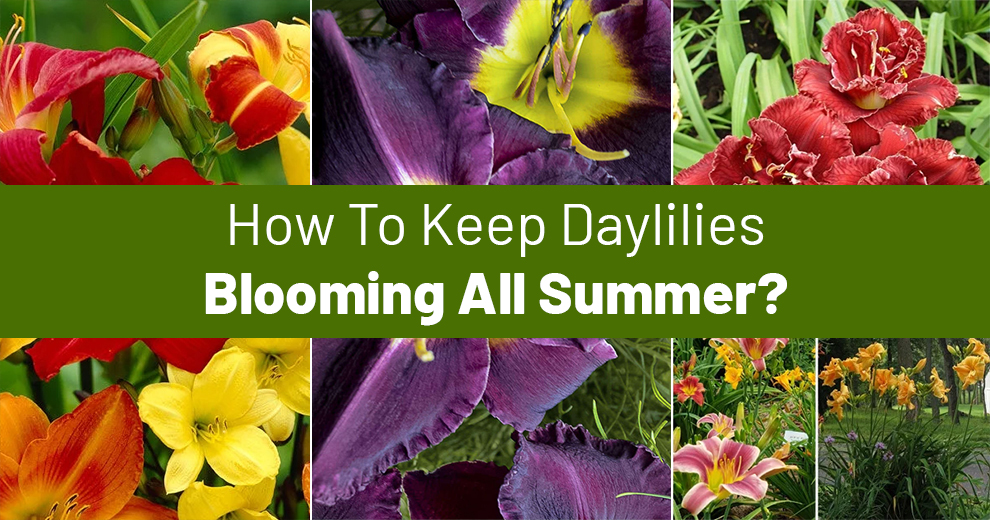
Daylilies are called daylilies for a reason. Each of its flowers lasts only a day. However, that does not mean you cannot enjoy them more often and in more numbers. So, how to keep daylilies blooming all summer to extend your plant’s flowering season?
For your daylilies to bloom all summer, you must plant them in early spring or fall. Alternatively, consider planting them at least six weeks before the summer season or earlier if possible.
While some types of daylilies have a relatively longer bloom time than others, there are also some easy ways to amplify this vibrant and beautiful plant’s display of colorful blossoms.
One such trick is deadheading. The dead flowers are an eyesore and directly influence the plant’s blooming window. Thus, deadheading the plants is one of the easiest ways to extend their blooming season.
Daylily Plant Information
Adaptable and vigorous, the daylilies are a highlight of any summer garden. Different types of flowers might come and go, but the daylilies keep yielding new flowers for up to four to five weeks.
Typically, they blossom from late June through July. However, several re-blooming varieties re-appear in the late summer. It can dramatically extend the plant’s growing season.
Beyond this, there are also a few effective ways to have these prolific bloomers bloom across the summers. Continue reading as we discuss below.
How Do I Keep My Daylilies Blooming All Summer?
Typically, the daylily varieties bloom in May or June, displaying a beautiful show of flowers for three to four weeks. But what if you want them to keep beautifying your garden’s beauty for a little longer? Here’s what you must do to have your daylilies blooming all summer:
1. Pick the right area for planting daylilies
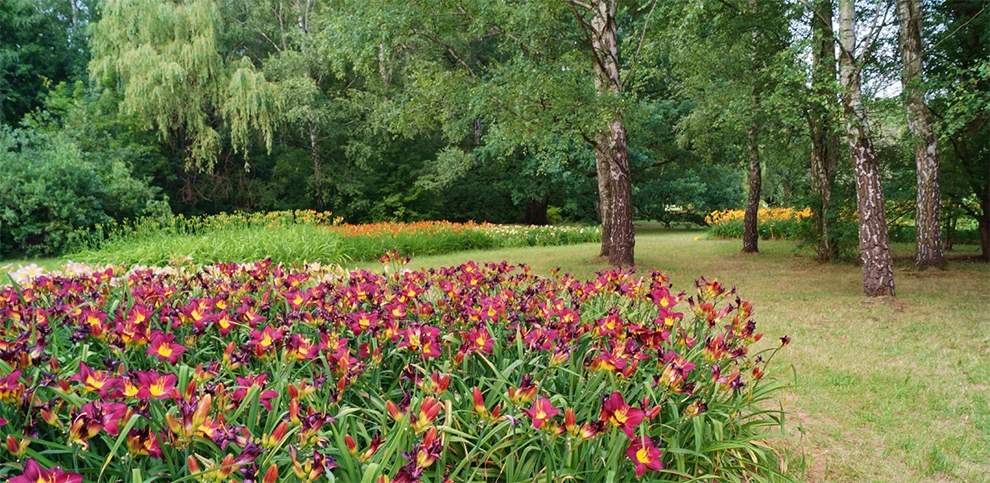
To ensure that your daylilies bloom across summer, you must be careful with the location where you plant them. It is a mandatory prerequisite to get the best blooms. So, look for a spot that meets the following prerequisites:
- The chosen area should receive at least six hours of sun daily for the plant to bloom. So, pick a spot that gets adequate sunlight in the morning, followed by part shade in the afternoon.
- Ensure that the planting area has access to fertile and healthy soil for the plant to grow fast.
- Even though daylilies are tolerant and adapt to the soil where you plant them, they enjoy slightly alkaline, well-drained soil with ten to eighteen percent moisture levels.
2. Pick the correct mix of daylily varieties
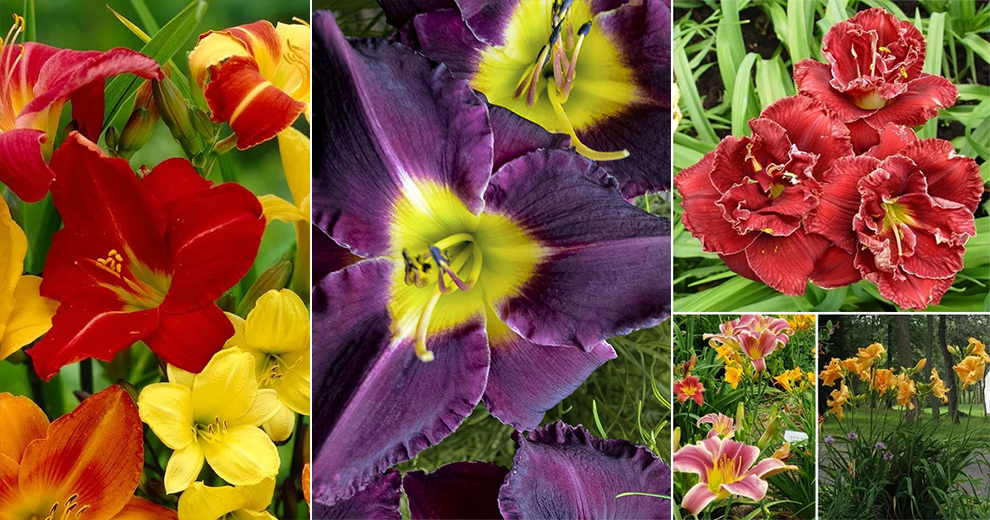
For your daylilies to bloom across summer, you must be cautious with what varieties you choose because not all daylilies will blossom across the summer.
Most daylilies have a three-week summer blooming season, and they vanish after that. But some of them can bloom all summer. These include:
- Pardon Me
- Apricot Sparkles
- Stella De Oro
- Happy Returns
- Fairy Tale Pink
- Dynamite Returns
- Night Embers
These daylily species do not bloom once. Instead, they bloom continually or intermittently from May through September. Hence, planting these blooms can be a good idea as they repeatedly bloom sans any break between the two rounds of flowering.
However, in some varieties, there may be a brief break. Consequently, the flowers will appear in early summer and continue showing across the season before they finally drop at the onset of fall.
However, you can find various other varieties beyond the above-listed seven daylily species. Their shapes, colors, and size may vary, but proliferation is standard amongst daylilies. Beyond that, several flowers grow on a single stem.
So, in only a single summer month, you can see hundreds of blooms on a large clump. Hence, we recommend opting for different types of daylilies to ensure that you have blooms across the summer season.
3. Select the right time for planting daylilies
If you wish to have colorful blooms across summer, you must plant them in early spring or early fall. You must plant them at least six weeks before the summer season, but growing earlier also works.
4. Planting the daylilies right
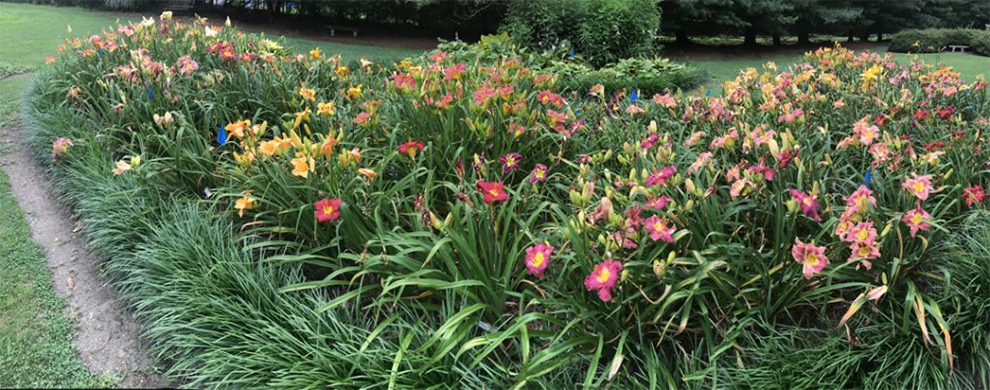
Now you know which daylilies are ideal to have, the best place to grow them, so now you have to understand how to plant them.
Ensure the soil is well-prepared for the plants to bloom rapidly and grow steadily. For this, you can take the following steps:
- Use aged manure or compost to raise the organic matter in the soil before you plant daylilies.
- Make a decently large hole to accommodate the roots.
- Ensure that the plant is buried in approximately an inch of soil at its crown where the roots and the leaves coincide.
- When tamping the soil to get rid of the air pockets, add the soil around the roots slowly.
- Pack the soil around the plant after you finish seeding it. Here is a detailed guide on how to grow daylilies from seeds.
- Water it well to ensure it is ideally saturated.
5. Maintain it during the growing season
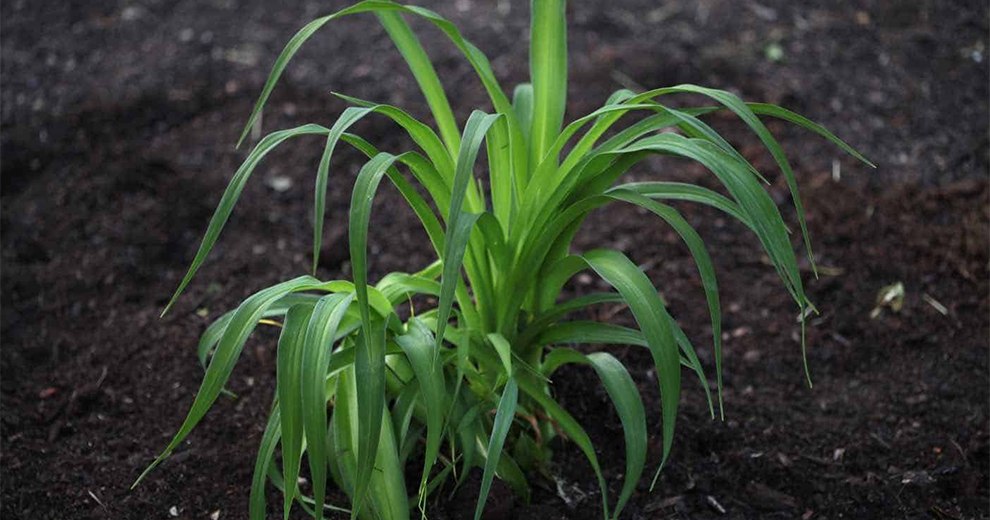
Maintenance is the key and a crucial step in learning how to keep daylilies blooming all summer. Here are the steps for good growth and maintenance of your daylilies:
- Water – You must regularly water your daylilies during the first season to get them started. However, once the daylilies establish, you must water them in arid conditions.
- Mulching – Daylilies can significantly benefit from mulching. It can help avoid weed emergence, reduce soil erosion, and help retain humidity. You must apply a thick mulching layer right at the root zone. Please do not cover the crown in the process.
- Fertilizing – You must fertilize the daylilies with extended-release fertilizer in late spring. It can significantly boost the blooming period. The right plant food can help you enjoy all-season blooms.
- Pruning and trimming – Whenever you spot the fattening seeds, you must instantly remove them. Seed production does not let the new flowers grow as seeds direct all the plant’s resources toward it, preventing the blooms from appearing. Thus, chop every scape to the ground to ensure no buds are on it.
While trimming, you must also chop the yellow leaves during the season. It will facilitate the growth of new leaves on the plant. You can get rid of the spent leaves by pulling them. Similarly, you can also pluck the spent flowers to maintain the plant’s appeal.
Tips for Re-Blooming The Daylilies
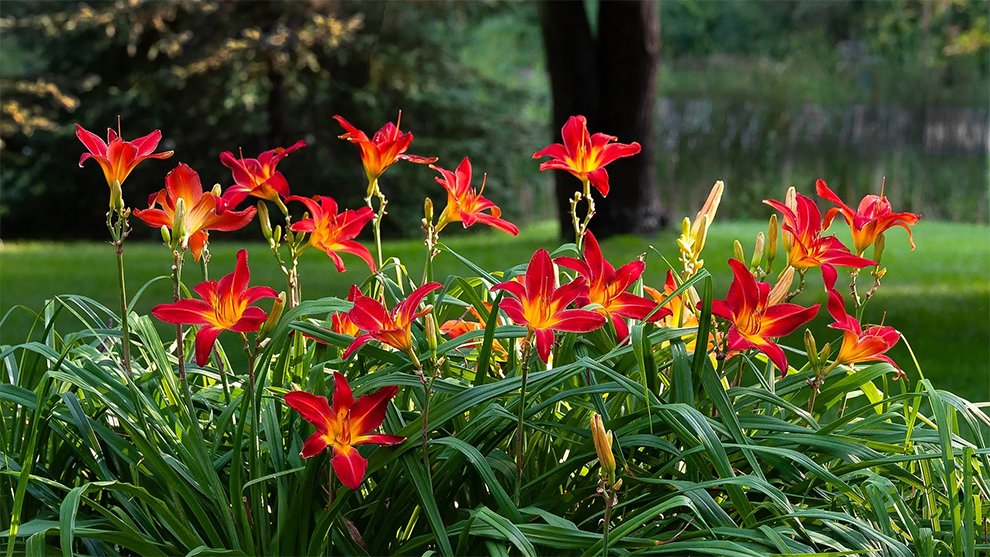
Once your daylilies bloom, you can set them to bloom back by doing several things. These include:
- Replanting and dividing them when they become too crowded.
- Opting for re-blooming varieties, such as Barbara Mitchell, Apricot Sparkles, Stella de Oro, Anzac, Advanced Party, etc.
- Water the daylilies after replanting to ensure they do not dry out.
- Expose your plant to ample sunlight during the day.
- Mulching the daylilies by two inches to not let the soil dry or weeds take over.
- Deadheading the flowers by snapping the spent flowers from the base every day.
- Chop off wilted buds whenever you spot them.
- A dedicated, low-nitrogen fertilizer offers the plant with necessary nutrients for steady growth.
- Watering the plant after feeding with a 5-10-10 daylily fertilizer.
- Trimming the daylilies to the ground during their resting season.
- Chopping the dead and dried leaves for the daylilies to bloom in the next season.
Some Daylilies That Bloom All Summer
Even though daylilies last for only a day, you can have daylilies blooming all summer if you pick the correct variety. Everblooming or re-blooming daylilies are the way to go. These are repeat bloomers with no or little gap between the bloom flushes.
Hence, your plant will have blooms across summer to the early fall. A few of your options include:
1. Returns variety
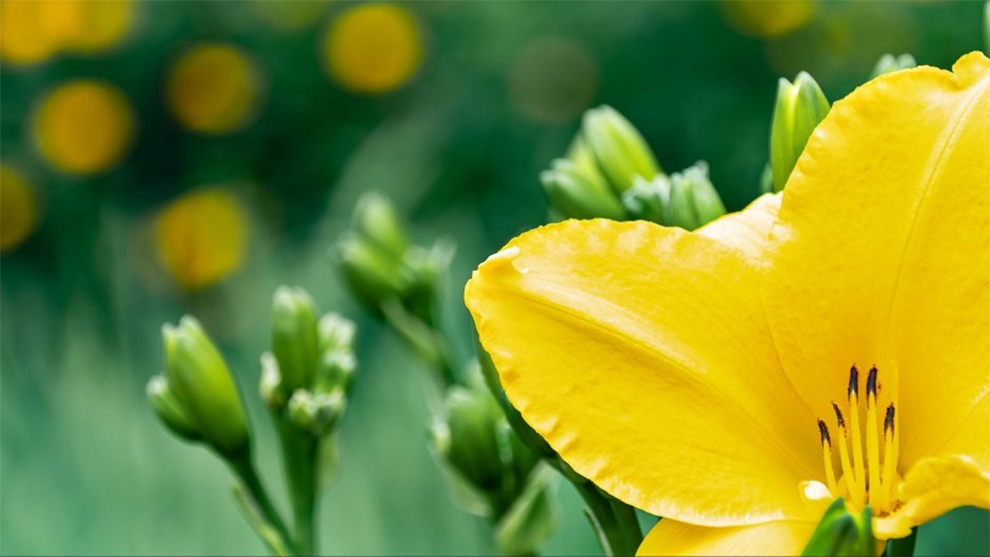
It is an everblooming daylily and a descendant of Stella de Oro. The plant grows yellowish-lemon flowers that are three inches wide. It is hardy in USDA zones three through nine.
A few others in the Returns series include ‘When my Sweetheart Returns’, which yields cream and pink blooms, Rosy Returns, which has pink petals and Dynamite Returns, which has ruffled red flowers.
2. Stella Daylilies
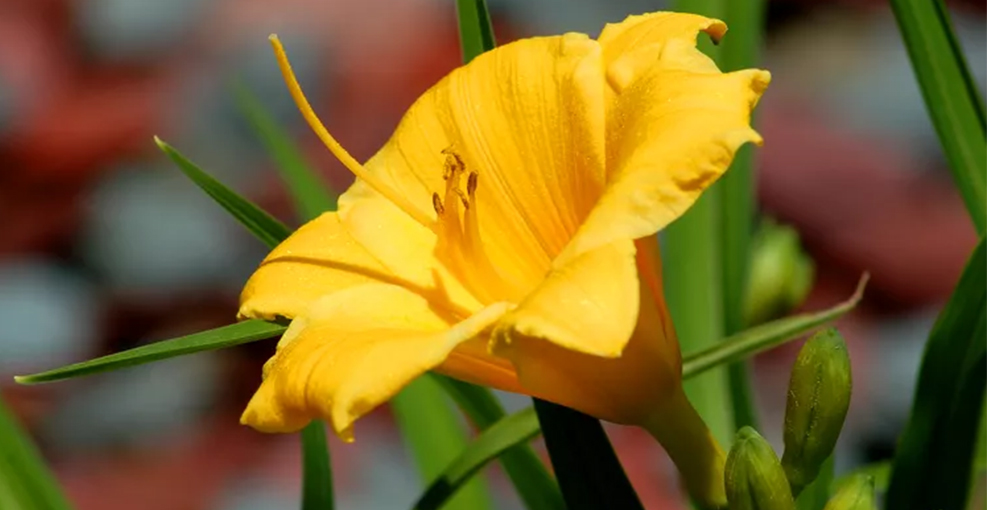
Stella de Oro is one of the most popular re-blooming varieties that offers color to your garden from spring through fall. It yields yellow-gold blooms that are 2-3/4 inch. The plant is hardy in USDA zones four through eleven.
Another similar variety in this specie is the Blackeyed Stella, which has dark red eye flowers and is a hardy cultivator in USDA zones three through ten.
3. More Summer Bloomers
Beyond this, several other re-blooming or everblooming varieties exist. These include:
- Little Grapette, a dwarf variety with dark purple blossoms
- Fairy Tale Pink with apricot-colored blooms
These are both hardy in USDA zones four through eleven. Night Embers is another re-blooming variety that has a double flower. This specie has dark red blossoms. They appear from early summer to the frost and are hardy in USDA zones five through nine.
Why Don’t My Daylilies Bloom All Summer?
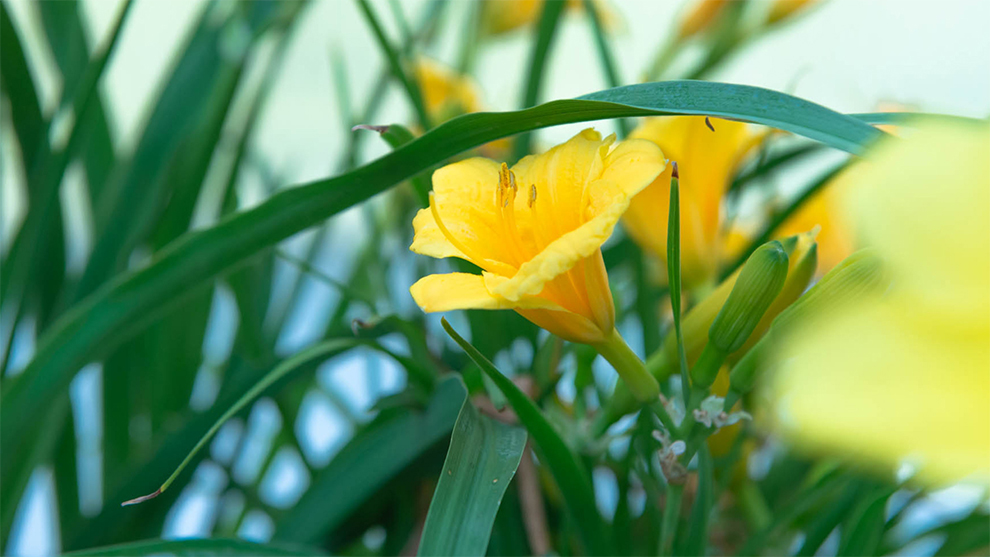
Many home gardeners wonder how do you get daylilies to bloom all summer. If you too are experiencing a situation wherein your daylilies do not bloom, it might happen because of an umpteen number of reasons. Here are some of them:
- Move them to an area that receives better sunlight. If the plants near the daylilies have grown and started shading it, the daylilies might be unable to get access to the required sun. Hence, it might not yield blooms. Thus, you might consider moving it to a sunnier spot to kickstart re-blooming.
- Even though they are not susceptible to insects or pest attacks, a disease might invade them and cease blooming.
- Daylilies stop blooming when crowded by strong plants. You can know if the plants in the vicinity are growing fine and producing adequate flowers, but your daylilies do not bloom.
In this case, you should consider relocating the daylilies to a spot where it does not have to compete with others for nutrients, soil, and sun. It is a more common concern if you grow the daylilies near fast-growing plants whose roots expand rapidly and start intruding into the daylily’s area.
- At times when the plant becomes fuller, it might not yield flowers. So, you can consider thinning it and planting smaller sections. It will give your plant ample space to spread, grow, and bloom.
- If you thin out your plant in the wrong period, it might also affect its blooming. For instance, if you prune the large clumps in the daylily at the end of fall, it does not give the roots enough time to spread and prepare for blooms.
- Lastly, if your daylilies did not bloom since you bought them, ensure that the weather conditions in your locality are conducive for the daylilies. If not, you should probably try a different variety.
What To Do When Daylilies Have Finished Flowering?
After the daylilies finish flowering, you must still ensure they look their appealing best. So for the right post-bloom daylily care, snap the spent flowers, ensuring you do not disturb the buds.
Once the flowers are done blooming, cut them to the ground to ensure the plant looks neat and directs its energy toward seed production. It can also encourage the plant to yield more flower spikes.
Related: Flowers for Florida summer heat
Common Doubts You May Have About Daylilies
Ques 1. Do daylilies come back every year?
Ans. Yes, daylilies come back every year.
Ques 2. When do daylilies stop blooming?
Ans. Typically, daylilies bloom for only four to five weeks, after which they stop blooming. However, every bloomer will bloom all summer, while rebloomers will have several flowering episodes annually.
